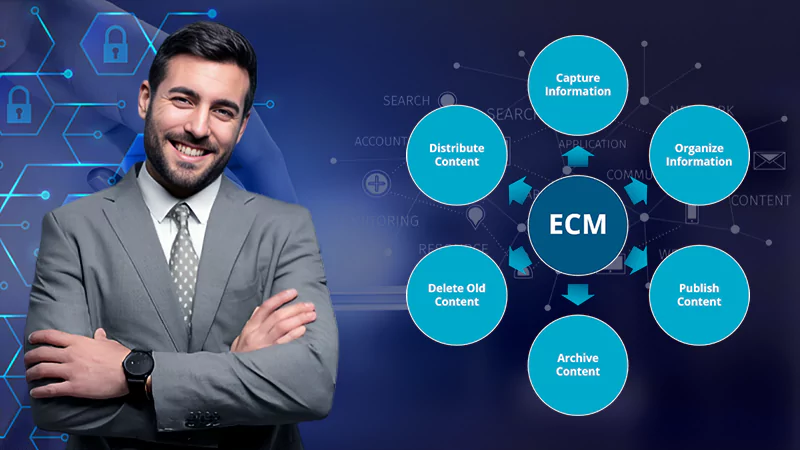What is Risk Management ?
Introduction
Business is full of unexpected uncertainties. While some are positive, the rest may be challenging or may even be obstructive. But you need to manage these uncertainties and figure out solutions to such situations. You would need to evaluate the opportunity costs and implement the best decision. Business management courses can help you get trained with the necessary skills you would need.
This article is all about risk management, the crucial role played by professionals during the process.
What is Risk Management?
Risk management is the practice of identifying, interpreting, and acknowledging risk in advances that are part of business life. Effective risk management implies striving to manage, as far as possible, expected consequences by taking precautionary measures. Therefore, effective risk management gives the potential to subdue both the occurrence of a risk happening and its likely impact.
What is Risk Response?
Risk response is the means of strengthening strategic decisions and planning operations to improve opportunities and lessen menaces to the project’s goals.
Response to Risks
Avoidance
As the title indicates, leaving a particular operation or choosing to not spring it at all is an option for reacting to risk. When you determine to evade risk, you are ripping off any probability of it posturing a menace to your business.
A current example of this is the change to work from home to protect workers from intercepting COVID-19. Most companies chose to evade the uncertainty of their workers getting infected.
Reduce
This implies taking measures to lessen the possibility or consequence of a mishap. If the uncertainty is just imperceptibly higher than you expected, then a reduction is a prudent approach for inducing it down to within sustainable limits.
On a personal level, we all exercise risk reduction in one way or another in our day-to-day lives. When we get on our bikes to go around, We put on the headgear to lessen the possible consequences of an event.
This action does not decrease the uncertainty of an event occurring. If that is your aim, then you would not step outside. In business, giving too much to lessen a risk can be a misuse of resources and time.
To illustrate this, suppose you are a cashier at a grocery market.
The first obligation of a cashier is to ensure the balances at the ending of every shift. Now at your store, you are allowed some range, specifically an over/under of up to INR 200, which means, if your drawer has missing INR 70, the store will write it off. But if it followed every time, the store has reason to be questionable. Now, assume there is an over/under the range of only INR 20. Does it make any point to pay someone to trace down INR 100 or be more practical to endure that you missed INR 20?
As you see by this instance, wasting too much time on small matters can be wasteful, so be mindful when picking this risk response.
Transfer
This option does not waive or lessen the possibilities of it happening but substitutes or transfers the obligation of the uncertainty to a third party. Obtaining insurance for your house does not decrease or eliminate loss from a blast, but it does give financial protection in the situation where losses do appear.
Another usual method for shifting risk is to put reimbursement clauses in contractual agreements, generally seen in construction and service job agreements, rental agreements, lease agreements, purchase order agreements, consulting and more. The purpose of both these and insurance schemes is to make you complete in the accident a covered risk happens.
One crucial point to keep in mind with this option is it only serves after the event. In the end, when handling perils to the company, the purpose of uncertainty transference is to subdue the impact conclusively. The business is, therefore, ready to take a risk on the uncertainty resulting.
Accept
There will be possibly other contingencies beyond your tolerance level. In events like this, you can accept the uncertainty as it is. In other words, risk acceptance is a submissive choice as it demands no action. Other uncertainties that can come into this section include developing risks or any menace in the future.
If you decrease risk, You are still holding the part within your longing. If you shift the risk through insurance, you still bear part of the uncertainty. Only when a closed event passes this value does your insurance take over to reimburse you for the damages.
Hence, unless you are evading the uncertainty completely, you are using a compound of the lessen (alleviate), shift, and accept uncertainty response approach by default.
Read This Also: Why is Cloud Accounting Software a Smart Decision for Businesses?
Why is Risk Management Important?
It Benefits to Lessen Contingency
Contingency is not safe for business, and it is tough to quantify. Knowing the internal and external aspects of the business is an essential part of understanding how to protect it.
Executive MBA programs can help you in understanding how to recognizee when the company is likely to be swayed is the core element of risk management. Of course, we can never eliminate the portion of the risk in business. Several unpropitious situations can admittedly be considered for and alleviated.
It is Essential for the Prosperous Planning
Business success infrequently comes by luck – more often than not, it is an outcome of precise preparation and persistent performance. Unexpected situations can influence the progress of your business if you do not have integrated curative measures in your plans.
If you neglect risk management completely, everything that you possess carries a high possibility of failure.
It Helps Improve Your Reputation
Possessing a good risk management strategy in place serves to convey optimistic information about the business. Internally, it imparts enthusiasm amongst the workers about the abilities of their superiors. Above everything, having a secure work area also helps to boost confidence.
When an accident inescapably hits, a business’s expertise to continue serving customers will also have a notable impact. It shows that the company is sturdy and stable and highlights a professional raising that can advance to get the task accomplished even during difficult times.
Risk Analysis Process
Risk analysis is an evaluative problem-solving method that uses several means of assessment to work out and estimate risks to evaluate and fix them. Here is the risk analysis process:
Identify Existing Uncertainties
Uncertainties identification chiefly means brainstorming. A business gathers its workers together so that they can study all the different causes of danger. The next move is to systematize all the recognised uncertainties in the precedence sequence because it is tough to alleviate all the risks.
Assess the Risks
In various cases, problem analysis includes recognizing the predicament and then obtaining a suitable solution. However, before reckoning out ways to manage uncertainties, a company should determine the basis of the risks by examining the question, What provoked such a chance and how it could affect the company?
Form a Suitable Response
Once the business is done with the assessment process, it necessitates asking the subsequent questions: What steps can limit the recognized danger from happening again? What are the measures to be taken if it happens again?
Develop Precautionary Tools for Recognised Uncertainties
The plans that were discovered to be beneficial in alleviating risks are formed into several tasks and then into possible strategies that can be disposed of tomorrow. If uncertainties occur, the ideas can be set to action.
Conclusion
A business faces several uncertainties that can influence its continuance and development. As a result, it is crucial to learn the fundamental principles of risk management and how they can help alleviate the impacts of risks on business existences. Therefore, opting for management certification courses can help you get trained and help you grow further in your career.
Next, you can read about: The Right Sides of Business Networking & How to Grow your Business Using Fractional Services in 2020
Follow Us
Latest Post















